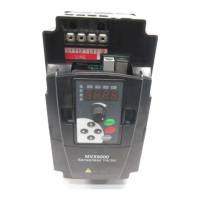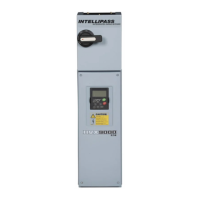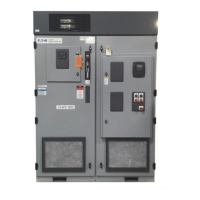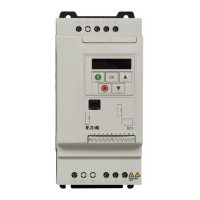Parameters
04/10 MN04020001Z-EN
118
Regenerative braking
If the rotor of an asynchronous motor is driven oversynchronously
in the direction of the rotating field, it generates electric power via
its stator windings. The motor becomes a generator. In the
frequency inverter, this generative energy causes an increase in
the DC link voltage.
Oversynchronous speeds occur, for example, when the output
frequency in frequency inverter operation is reduced with short
deceleration times, the connected machine has a large flywheel
mass or when the flowing medium in pumps and fans works
against the speed reduction.
The rise in the DC link voltage is monitored by the M-Max
TM
frequency inverter and always enables a braking torque of around
30 % of the motor rated torque. A higher braking torque can be
achieved by selecting a more powerful frequency inverter. From
the 1.1 kW (3.3 A at 400 V = MMX34AA3D3…) rating, the
internal brake chopper with an external power resistor enables up
to 100 % of the rated motor torque.
P12.4 508 - DC braking, braking time in case of STOP 0.00
0.00 - 600.00 s
Duration of DC braking after the stop command.
With P6.8 = 1 (Stop function ramp), the activation of the DC
braking occurs with the output frequency set under P12.3 with the
braking time set here.
With P6.8 = 0 (free run-out), the activation of the DC braking c
occurs directly with the stop command. If the output frequency a
is greater than or equal to the rated motor frequency (P7.6), the
value set here is considered for the duration of the braking time.
If the output frequency is less than or equal to 10 % of the rated
motor frequency (P7.6), the duration for DC braking is reduced
respectively to 10 % of the value set here.
PNU ID Access right
RUN
Value Description Factory setting
(P1.3)
f
t
f
t
P6.8 = 0
P12.4
P7.6
P7.6
P7.6
f
t
FWD
REV
a
a
b
c
b
c
100 %
P12.4
10 %
10 %

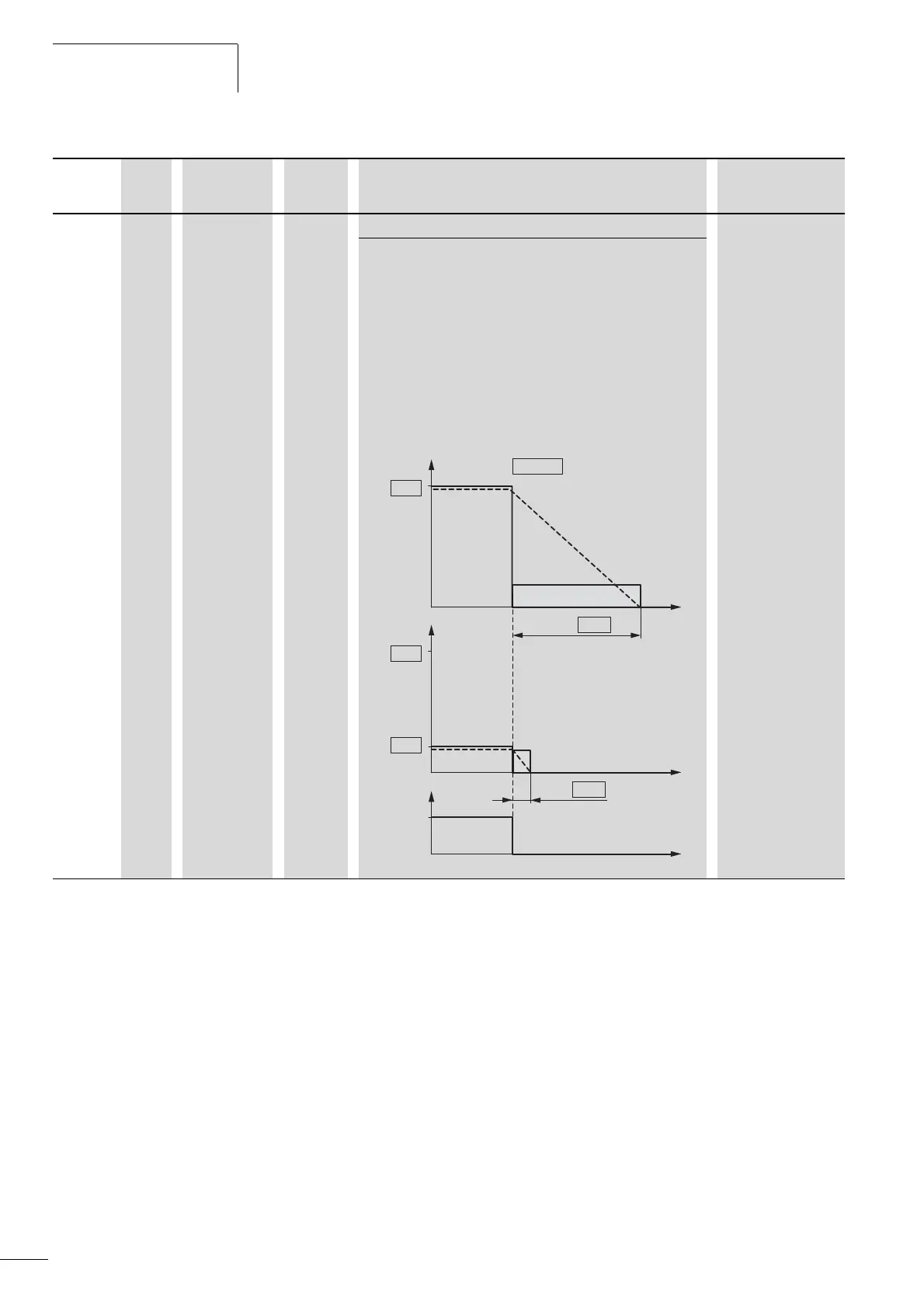